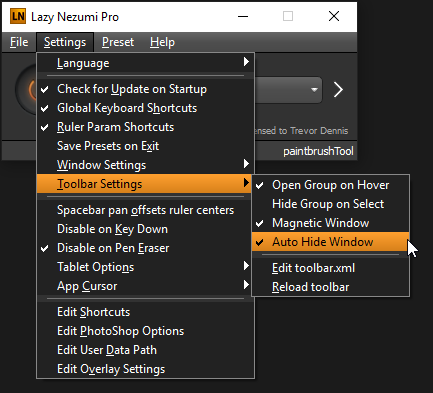
Lazy nezumi for mac drivers#
Reasons to need it range from your hand is shaky, your mouse/tablet drivers are incompatible at some level ( common lately even for Wacom), a subpar graphics tablet/mouse hardware issue, art program brush limits, and to whatever else.
Lazy nezumi for mac software#
That is any line drawn in software and corrected, rather it be mouse or graphics tablet input. System-wide mouse and pen smoothing for Windows.To finish off my current round of software reviews the last ones are for drawn line correction, stabilization, smoothing, tracking, altering, and other names given to the same task. Painting with long brushes can help paint more broadly and fluidly.īeautifully designed system-wide stylus control for the Mac.

Traditional:Ī tool that allows you to work with nearly used-up pencils or charcoal sticks. You can use it to lengthen the lever.

Summary: know your tools and use the right tool for the job. Each tool has its advantages and disadvantages. That said, there are a few tools that can be helpful in understanding “smoothness” and force you – more or less gently – into using a long lever. If you struggle with clean, smooth lines, I think focusing on Movement and Mindset will bring the most lasting improvements. Practice becoming more aware and courageous. I also highly recommend this talk with Josh Waitzkin, Adam Robinson & Dr. I have written more about developing somatic/physical awareness here and treating fears with a growth mindset here. I believe the solution lies in gradually developing the skill of releasing tension in our bodies and minds. As long as you keep your attention on this fear, there is little hope of creating good work.Ī certain level of relaxed focus is essential to drawing lines that are alive with movement. This could be called fear of failure, fear of being judged, fear of not being good enough, etc… Whatever it is, it can be a flow-killer.Īll wrapped up in our heads, we are unable to think, feel, even breathe. Then you notice that somebody is looking over your shoulder and all of a sudden you can’t seem to find the right lines. Have you ever had this happen? You are drawing and it’s going quite well. When I was a young student, I noticed that I got tense when someone was watching me draw. Summary: use the right joint! A long line requires a long lever. Most problems with jittery lines come from using a lever that is too short. For shorter lines, rotate from your elbow, wrist, or fingers. For long lines, pivot from your shoulder, moving your entire arm. Select the pivot point depending on the length of the line you want to draw. The pivot point is the joint where the rotation happens: your shoulder, elbow, wrist, and fingers. In drawing, the lever is the distance from the tip of the pencil to the pivot point.

If we desire a smooth line, we need to move smoothly. How we move influences the type of line we create. Lines are created by the movement of our body. Let’s call them the Three M’s of Smooth Lines: Naturally flowing lines require at least three things. This post will give you some pointers to acquiring this ability and explain why it’s about more than just body mechanics.

Many artists struggle with drawing clean, smooth lines.


 0 kommentar(er)
0 kommentar(er)
